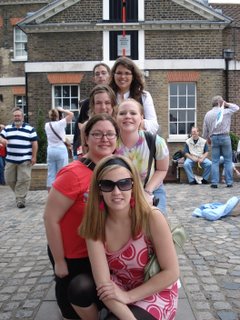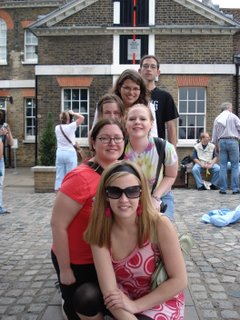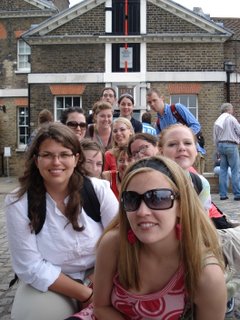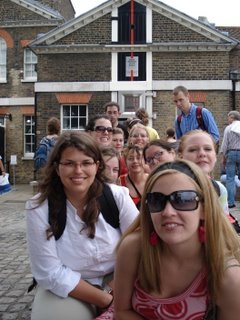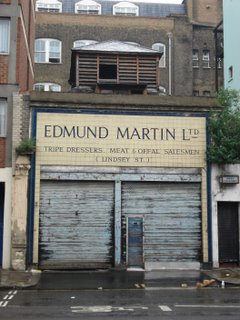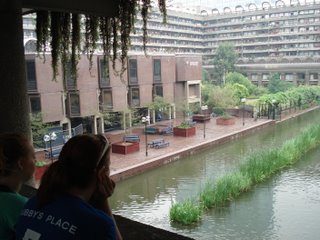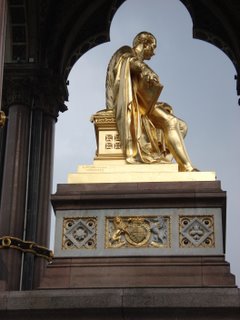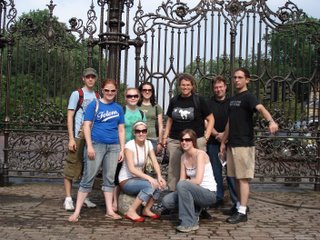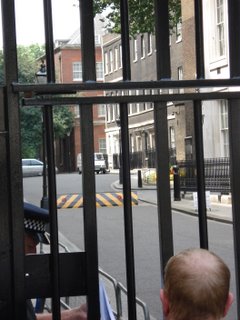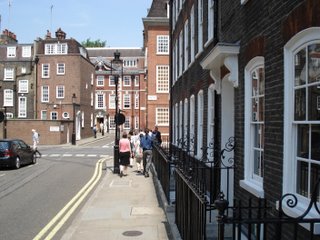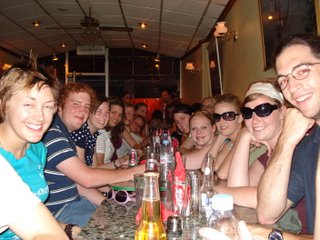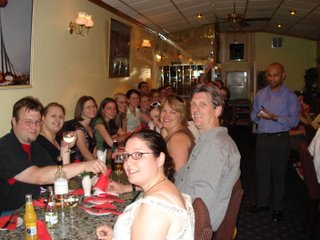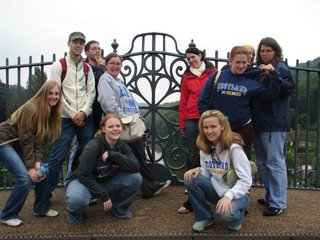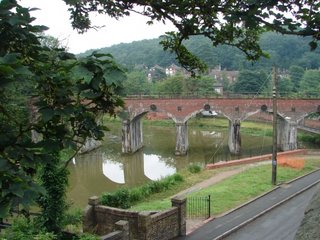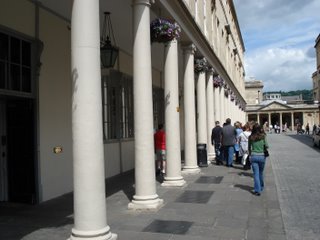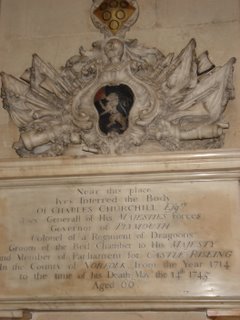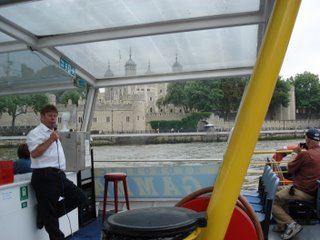 And then there was one. The last full day of the program in Britain, and the last full day in London. Both the English literature group and the history group set off from the Embankment down the River Thames to Greenwich. London was important because it was on an important waterway, and, while we saw sites such as the Tower of London (in the background, here), it was really the docklands to the East of the Tower (the East End) that was most important for our purposes.
And then there was one. The last full day of the program in Britain, and the last full day in London. Both the English literature group and the history group set off from the Embankment down the River Thames to Greenwich. London was important because it was on an important waterway, and, while we saw sites such as the Tower of London (in the background, here), it was really the docklands to the East of the Tower (the East End) that was most important for our purposes.Today, the warehouses and docks have closed, to be replaced by upmarket condos, and the Canary Wharf financial district, but, for hundreds of years the East Ends docks were the center of a vibrant community of poorer Londoners.
At Greenwich itself are the buildings designed by Christopher Wren, surrounding one or two buildings of a royal palace, the Palace of Placentia, surviving from the days of Henry VIII and Elizabeth. Under the Stuarts, Greenwich declined until rebuilt by Charles II. But, after the Glorious Revolution, William had little interest in Greenwich, which was built to Wren's design (and largely completed by Hawksmoor). It became a hospital and home for retired sailors, the Royal Naval Hospital. After that it became the Royal Naval College, and, currently, is the home of Greenwich University. I didn't take you all to the Painted Hall in the old Naval College buildings, which was a mistake, but I did a quick run there myself.
- The Painted Hall is a masterpiece of decoration. The artist was Sir James Thornhill, and it took him nineteen years to complete the work, finishing in 1727. He was paid three pounds a square yard for the ceiling and one pound a square yard for the walls. The Hall was designed as a dining room for the pensioners, but proved to small for the population. It was not used for this purpose again until 1939, when the Navy used it as their Mess until 1998. In 1806 the body of Nelson lay in state in the Painted Hall until he was taken upriver by funeral barge for burial at St Pauls Cathedral. (Greenwich Guide)
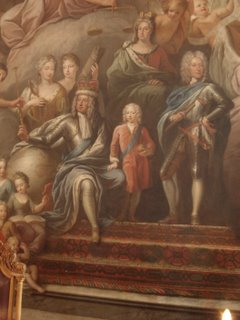 Next time, you really ought to poke your head in there. Walls and ceilings are all upholding the Glorious Revolution by focusing on William and Mary. I also visited and ate at Goddard's Pie and Eel shop (although I didn't have eels), while most of you had TexMex food.
Next time, you really ought to poke your head in there. Walls and ceilings are all upholding the Glorious Revolution by focusing on William and Mary. I also visited and ate at Goddard's Pie and Eel shop (although I didn't have eels), while most of you had TexMex food. 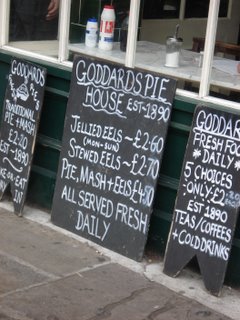 It is one of the last of a kind serving more traditional East End working class hot lunches, but I thought I might have trouble convincing you of the joys of meat pie, mash, and mushy pees with "liquor" (a green flecked clearish white liquid of indertiminate origin). I enjoyed the experience.
It is one of the last of a kind serving more traditional East End working class hot lunches, but I thought I might have trouble convincing you of the joys of meat pie, mash, and mushy pees with "liquor" (a green flecked clearish white liquid of indertiminate origin). I enjoyed the experience.What we all seemed to enjoy is hiking up to the Greenwich Observatory, founded and built under Charles II in the late seventeenth century. Observation of the skies was vital for determining latitude and longitude of ships travelling the globe in the 18th century and beyond, as was, for longitude, the exact measurement of time. Greenwich became the home Greenwich Mean Time (GMT), from which all other times zones derived. So, we became quite proficient at taking our picture on the Prime Meridian outside the Observatory.
